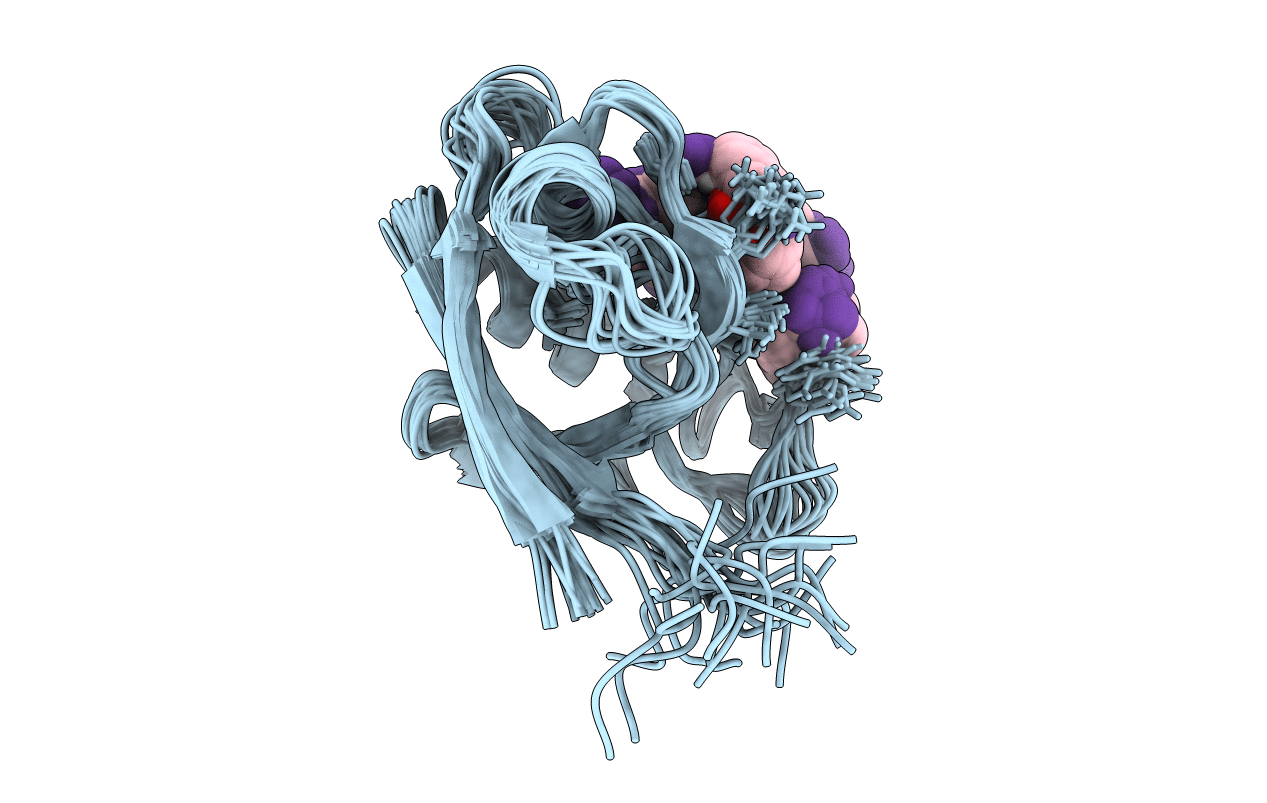
Deposition Date
2003-11-12
Release Date
2004-05-18
Last Version Date
2024-10-30
Entry Detail
PDB ID:
1RGR
Keywords:
Title:
Cyclic Peptides Targeting PDZ Domains of PSD-95: Structural Basis for Enhanced Affinity and Enzymatic Stability
Biological Source:
Source Organism:
Rattus norvegicus (Taxon ID: 10116)
Host Organism:
Method Details:
Experimental Method:
Conformers Calculated:
100
Conformers Submitted:
22
Selection Criteria:
structures with acceptable covalent geometry,structures with the least restraint violations


